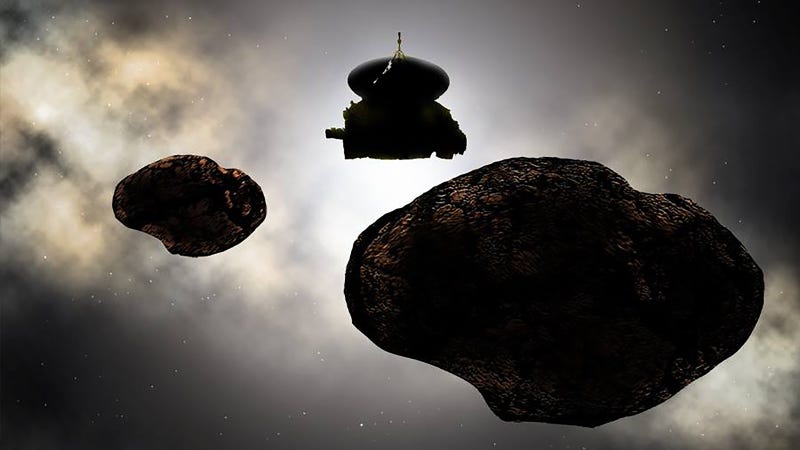NASA’s spaceship New Horizon, launched in 2006, started its voyage with the aim to explore the uncharted territories beyond the solar system. On January 1, 2019, this spaceship threw a New Year gift to astronomy enthusiast across the globe when it flew-by close to a mysterious tiny rock revolving around the sun for billions of years in the dusk. The powerful cameras of New horizon captured closest images of the body, named as Ultima Thule – officially known as MU69. It is the farthest object visited by mankind.
It was reported on March 18th, 2019 at the Lunar and Planetary Science Conference that this double-lobed distant world caught by New Horizon space draft created in the early days of the solar system. That gentle crash, plus the Frankenstein body, suggests that planetesimals like Ultima Thule form from clouds of dust and rock clumping together under the force of their own gravity. Before New Horizons, it wasn’t clear if these proto-planets formed from cloud collapse or from small rocks slowly sticking together to form larger rocks over time.

The further new analyses by a team of researchers
show that this tiny space rock formed from a rotating cloud of even
smaller rocks that collapsed into two individual objects. Those objects then
gently collided in the early days of the solar system. The first map of the
space rock’s geology may help explain that flatness. The map shows distinct
mounds on both lobes whose borders are still visible today.

Muhammad Abdullah Khan has done bachelors in Chemistry from Government College University
Lahore. He is a science enthusiast and loves to read and write about astronomy, cosmology and latest
scientific endeavors.

